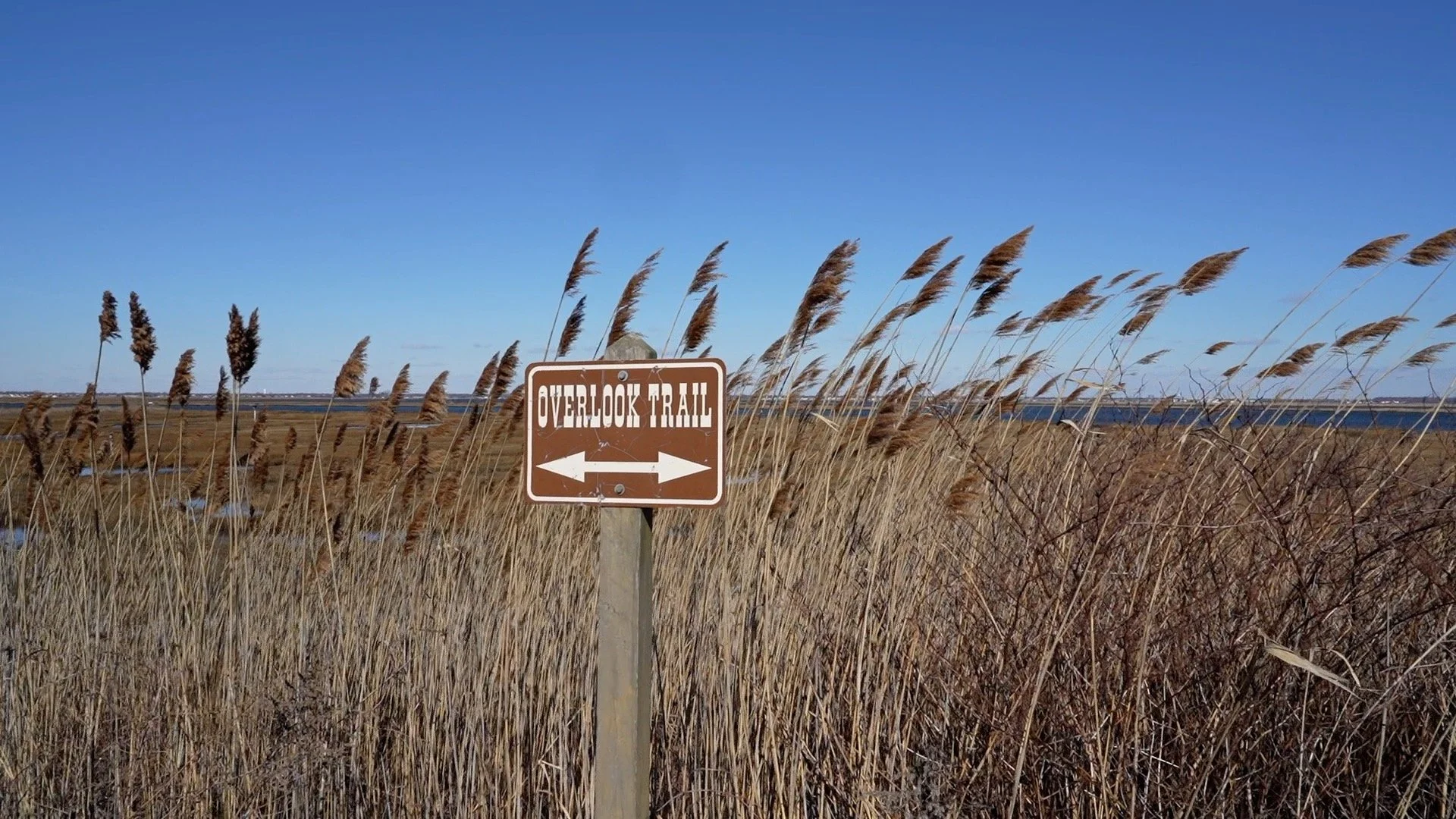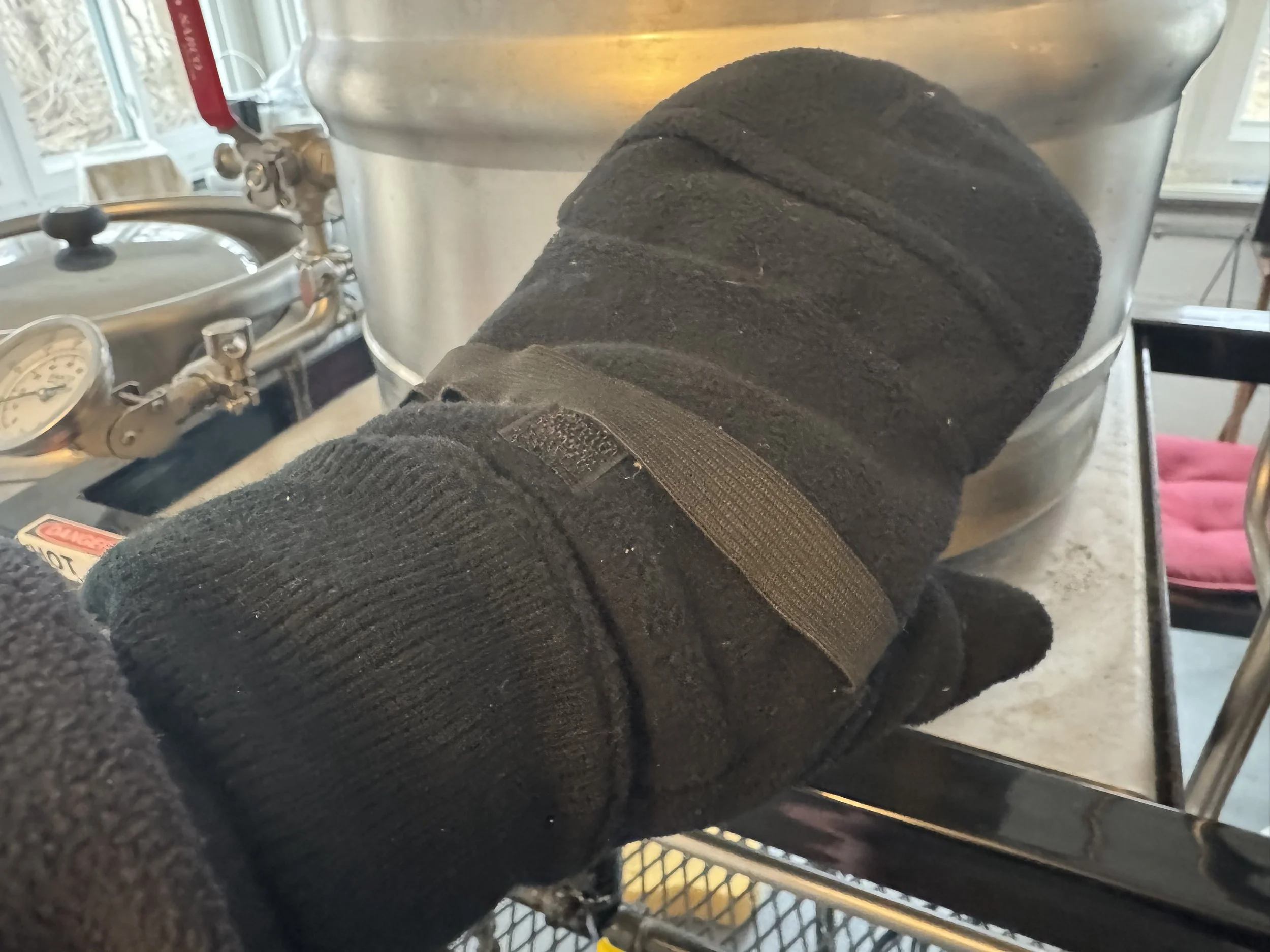The Marquis of Lorne Set
SEE BUTTON FOR THE YOUTUBE VIDEO AT THE BOTTOM OF THE PAGE
THE PLACE
The Lido Beach Passive Nature Area, in Lido Beach on New York’s Long Island, overlooks several low, reed-bestrewn islands in the East Channel. The 40-acre preserve is accessible by car on the north side of Lido Boulevard.
The day I was there, in late February, 2025, a strong cold wind blew consistently out of the west. Even bundled up, I only was able to stand in the grips of the wind for a couple of minutes before the cold numbed my lips and fingers.
A row of massive bags full of oyster shells leaned against a chainlink fence near the marina next to the preserve. Later I saw crushed shells covering the manicured trails that lead through the preserve. The trails are well maintained and marked with placards describing the habitat in the marshes and directing visitors to travel only along the ample trail network, for the protection of wildlife. Various boxes and platforms are set throughout the preserve to facilitate the nesting of birds.
By distinct contrast to the wild natural preserve, the Manhattan skyline was clearly visible off to the west.
CLICK HERE for information about the preserve.
Below are moments from the YouTube video linked at the bottom of the page.
THE LENS
I’m not particularly well equipped to deal with shooting video in high wind. I’m using a 20-year old Sony tripod, which provides plenty of stability for my mirrorless camera and 200-600mm telephoto lens on calm days, but it’s a wee bit too thin in the legs to keep the camera from being batted around when the wind moves faster than about 15 mph. To complicate matters, the lens hood acts like a sail, and with its position at the end of the long lens, its advantage in leverage increases the wind’s impact upon camera stability.
I’ve recently started making good use of an unlikely gear item though, to deal with wind and cold. As a bagpiper for many years, often playing in the snow, wind, and rain, I picked up a couple pairs of piper’s gloves - which likely aren’t exclusive to bagpipers. They’re fingerless gloves with fleece sections you quickly can pull over the exposed ends of your fingers to keep them warm when you’re not actively manipulating camera controls. They also have a pouch to fit a crushable warming packet; though I haven’t ever used one of those. See pictures below of a piper’s glove.
THE MUSIC
I played two hornpipes on the fiddle for the soundtrack to the video linked below. The tunes were The Marquis of Lorne and Loch Leven Castle. I accompanied myself on the bodhrán. Please find links to pertinent sheet music below, courtesy of thesession.org.
After a short while playing around on the fiddle as a kid, I picked up the instrument in earnest in my mid 40s, and I just passed my 13-year anniversary as an adult fiddle learner. In that time I’ve learned about some differences between learning as a child and learning as an adult.
Specific to my fiddle playing, I’ve realized that when I was young, I more readily was able to make my body conform to some of the positional advice that was prevalent at the time (much of which still is prevalent today). Keeping my fingerboard-side wrist straight and getting the associated elbow well under the instrument weren’t things that gave me any trouble back then, and perhaps if I’d stuck with the instrument instead of letting it collect dust for more than 30 years, I’d have formed my frame into those shapes. However, due to injuries and age, and the concomitant degradation in my overall flexibility, I find that even with years of diligent practice, holding to what’s generally considered to be “correct” fiddle-playing posture is decidedly unfeasible. That gave me conniption fits for at least the first decade of learning as an adult.
It’s only been in the past year or so - more poignantly in the past couple of weeks - that I’ve realized that instead of trying to force my body into configurations it no longer can reach, I’d have to come up with creative ways to adapt some of those positional ideas so they’re compatible with my body’s capabilities.
Of course it’s true we all have to adapt to all kinds of intrinsic and extrinsic changes all the time if we want to stay vital and productive. Change, as we know, is one of life’s constants. We adapt or get snowed under. But the difference in perspective now lives in my realization that, as a young person, if I worked well and hard enough, I often could get my body to conform to the techniques I was trying to learn; whereas, as an older person, trying to cajole my body into making certain structural changes often is a fool’s errand.
Now instead of trying the haul my elbow under the fiddle and toward my centerline in order to put my fingertips in position to access the notes on the fingerboard, I leave my obstinate elbow where it’s made camp, farther toward my outboard side than is optimal to facilitate facile finger position, and I compensate by letting my fingerboard wrist and hand structure collapse in ways that might make a proper violin teacher howl with rage. This structure - or lack of structure - has its own limitations and downfalls, but it gets my fingers where they need to go more often than not, which, regarding playing music with those fingers, is the whole point.
The ways in which this fiddle-based lesson is applicable far outside the realm of music training exists within the following message: We all have limitations that might be impossible to remedy - in fact we collect more as we age - but if we swallow the perhaps bitter pill of accepting our limitations, we can get on with finding ways, including unorthodox ways, to continue meaningfully to contribute to life.
THE GLASS
Few outside the beer-brewing world community know that ironically, simple mass-produced fizzy adjunct lager is in many ways a sophisticated product. Any homebrewer will tell you, it’s not easy to make well. There’s little margin for error in making light lagers, if you want them to look and taste like the workaday beers perhaps you grew up drinking.
It’s safe to say most homebrewers start by brewing darker ales, which take less time to ferment, and which stylistically allow for greater variance in results. Style guidelines are just that; they’re only guidelines, but the objectively measurable fact remains that if you’re out to make a crystal-clear, straw-colored, light-bodied lager, and it comes out displaying anything other than your intended characteristics, then somewhere you went off your planned course. Staying that course takes strict attention to detail, often using more sophisticated techniques and gear than are associated with most entry-level homebrewing kits.
With all that in mind, sometimes when the urge to drink some light lager that’s as cold and bracing as the icy February wind in Lido Beach, lots of homebrewers - including myself - will zip down to the supermarket and cart up some mainstream lagers without the slightest tinge of snobbery. I’ve done this several times recently. And it’s perhaps counterintuitive, but there’s plenty of winning charm to a near-freezing bottle or can of light lager on a cold day.














